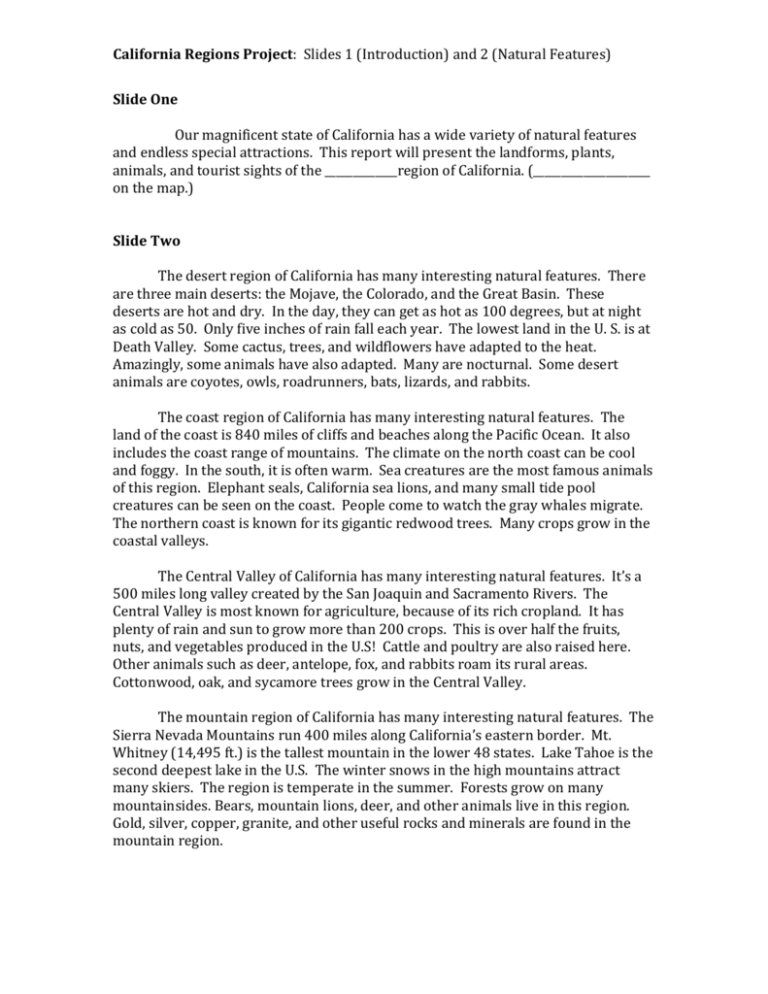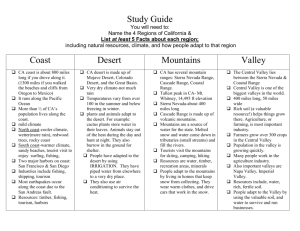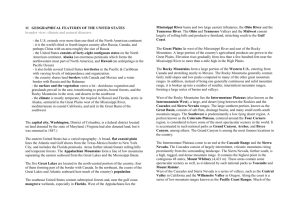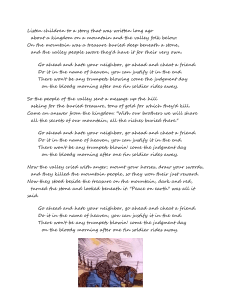a MS Word document of the California Regions Paragraphs
advertisement

California Regions Project: Slides 1 (Introduction) and 2 (Natural Features) Slide One Our magnificent state of California has a wide variety of natural features and endless special attractions. This report will present the landforms, plants, animals, and tourist sights of the _____________region of California. (_____________________ on the map.) Slide Two The desert region of California has many interesting natural features. There are three main deserts: the Mojave, the Colorado, and the Great Basin. These deserts are hot and dry. In the day, they can get as hot as 100 degrees, but at night as cold as 50. Only five inches of rain fall each year. The lowest land in the U. S. is at Death Valley. Some cactus, trees, and wildflowers have adapted to the heat. Amazingly, some animals have also adapted. Many are nocturnal. Some desert animals are coyotes, owls, roadrunners, bats, lizards, and rabbits. The coast region of California has many interesting natural features. The land of the coast is 840 miles of cliffs and beaches along the Pacific Ocean. It also includes the coast range of mountains. The climate on the north coast can be cool and foggy. In the south, it is often warm. Sea creatures are the most famous animals of this region. Elephant seals, California sea lions, and many small tide pool creatures can be seen on the coast. People come to watch the gray whales migrate. The northern coast is known for its gigantic redwood trees. Many crops grow in the coastal valleys. The Central Valley of California has many interesting natural features. It’s a 500 miles long valley created by the San Joaquin and Sacramento Rivers. The Central Valley is most known for agriculture, because of its rich cropland. It has plenty of rain and sun to grow more than 200 crops. This is over half the fruits, nuts, and vegetables produced in the U.S! Cattle and poultry are also raised here. Other animals such as deer, antelope, fox, and rabbits roam its rural areas. Cottonwood, oak, and sycamore trees grow in the Central Valley. The mountain region of California has many interesting natural features. The Sierra Nevada Mountains run 400 miles along California’s eastern border. Mt. Whitney (14,495 ft.) is the tallest mountain in the lower 48 states. Lake Tahoe is the second deepest lake in the U.S. The winter snows in the high mountains attract many skiers. The region is temperate in the summer. Forests grow on many mountainsides. Bears, mountain lions, deer, and other animals live in this region. Gold, silver, copper, granite, and other useful rocks and minerals are found in the mountain region. California Regions Project: Slides 1 (Introduction) and 2 (Natural Features) Three of the _________________ region’s many attractions will be discussed. First, ____________________________________________________(name the attraction and where it is located) <YELLOW> Write 1 or 2 reasons why it is popular. _________________________________________________________________________________________________ _________________________________. < RED> Next, ___________________________________________________________________ .<YELLOW> 1 or 2 reasons ______________________________________________________________________________________ ______________________________________________________________________________<RED> Finally, __________________________________________________ .<YELLOW> Reasons _____________________ _________________________________________________________________________________________________ ______________________________<RED.>











